Struggling to design a functional space around a fireplace? You’re not alone. Many homeowners face challenges with an awkward living room layout with fireplace — whether it’s off-center, tucked in a corner, or dominating one wall. The good news? With the right furniture arrangement and a few clever layout ideas, you can transform that tricky setup into a cozy and stylish living space.
In this article, you’ll find seven smart solutions to make the most of your space — no renovation needed.
1. Float Furniture to Create Flow

If you’re struggling with an awkward living room layout with fireplace, one of the smartest tricks is to float your furniture.It means pulling your seating arrangement away from the walls and centering it around a rug or coffee table. It opens up the room and naturally draws attention to the fireplace without overcrowding.
HGTV’s guide on furniture arrangements offers more layout examples.
2. Divide the Room into Functional Zones
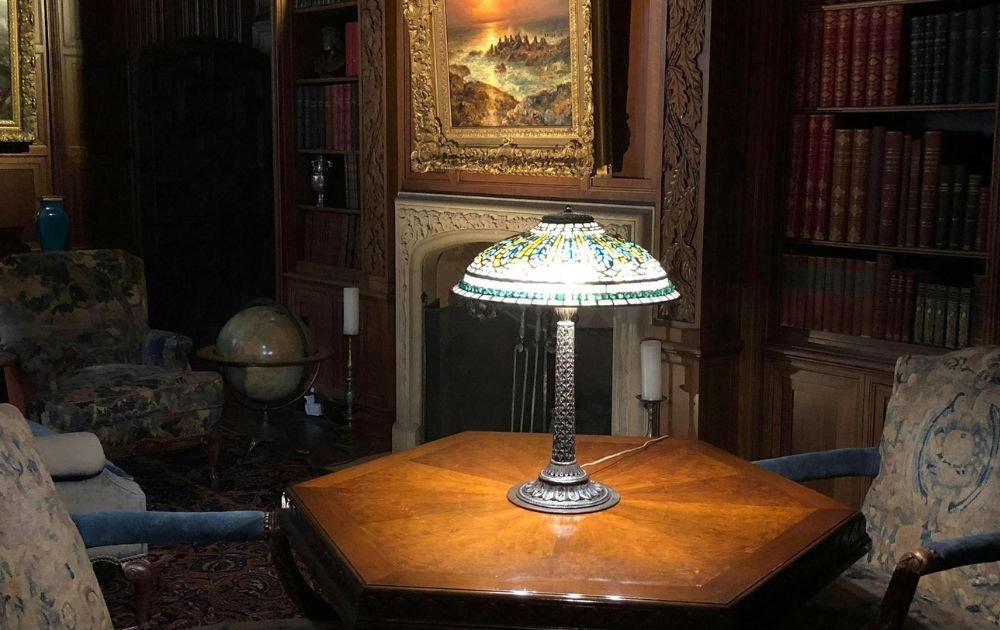
When you have an awkward living room layout with fireplace, dividing the space into zones can help make sense of the setup. For example, you can use one side of the room for lounging and the other for reading or working, all while keeping the fireplace as a cozy focal point.
You can use visual dividers like rugs, open shelving, or even a low bench to subtly separate one area from another. This zoning approach works wonders in large, rectangular rooms or spaces that connect to dining areas or entryways.
3. Work With a Corner Fireplace, Not Against It
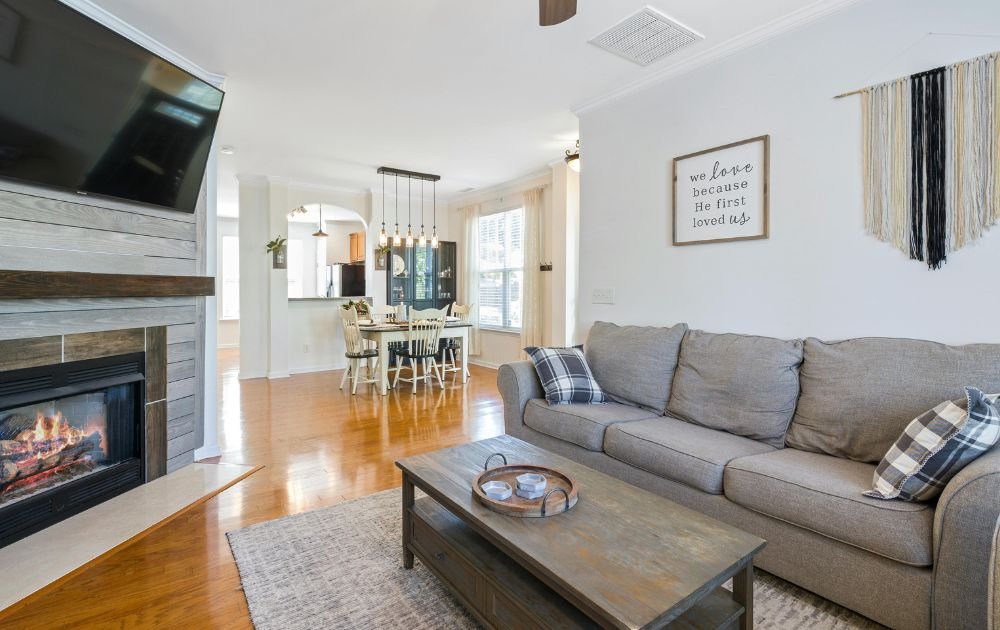
An awkward living room layout with fireplace, especially one tucked into a corner, doesn’t have to be a design nightmare. Instead, try angling your furniture to face it, then add balance by styling the opposite wall with artwork, mirrors, or open shelves.
Also, consider painting the fireplace wall a slightly different tone to make it feel like a design feature rather than an accidental placement. This simple trick makes the whole room feel intentional and tied together.
4. Choose Scaled Furniture That Fits the Layout
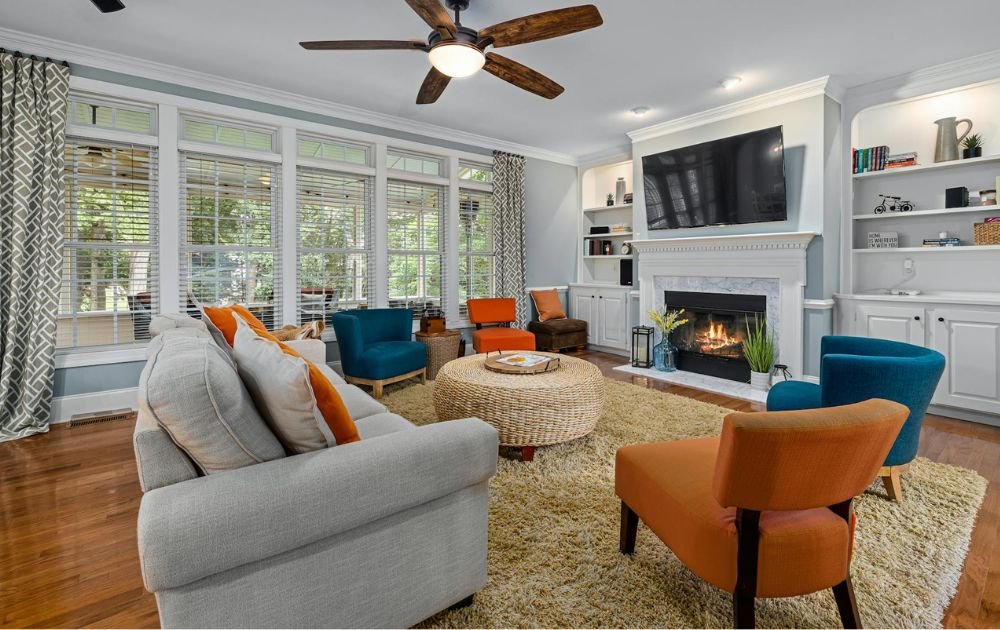
A common issue with an awkward living room layout with fireplace is using furniture that’s either too big or not flexible. Instead, opt for smaller-scale furniture or pieces with open legs and low profiles. It keeps sightlines clear and makes the room feel airier. Look for armless chairs, round coffee tables, or even modular furniture that you can reconfigure based on your needs.
5. Decide If the Fireplace Should Be the Focal Point
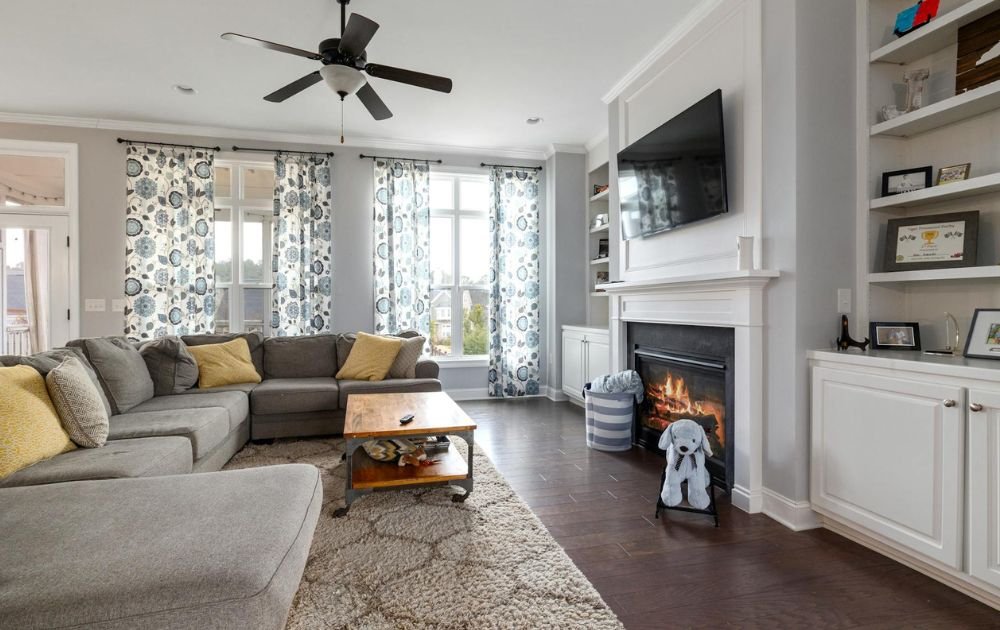
In some homes, an awkward living room layout with fireplace creates confusion about what the focal point should be — the fireplace, the TV, or the view? It’s okay to choose what works best for your lifestyle, even if that means styling the fireplace as a secondary feature.
6. Balance the Fireplace Wall Visually
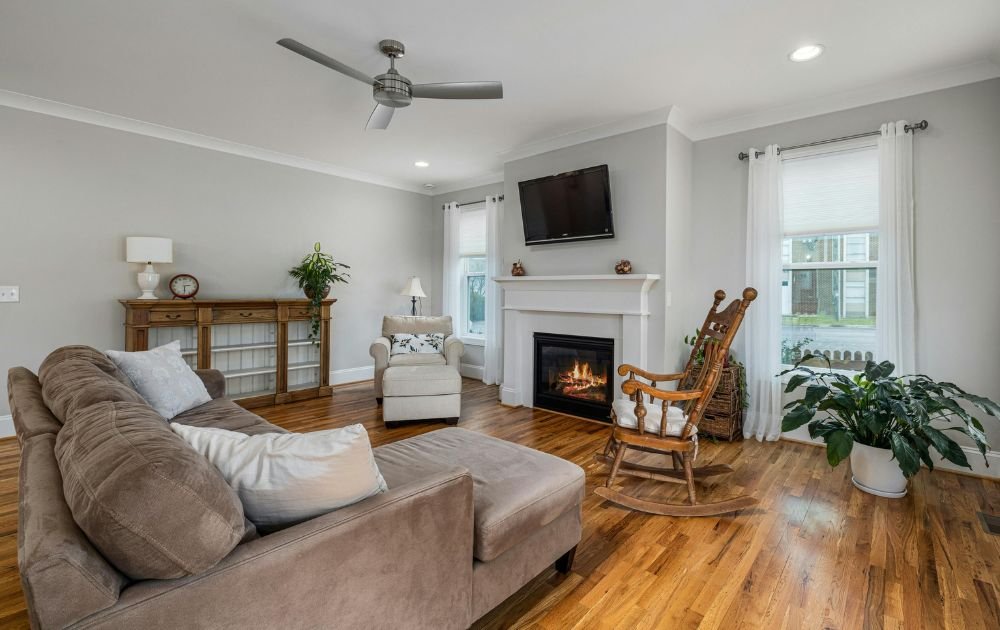
Balancing a wall in an awkward living room layout with fireplace often means styling both sides of the fireplace symmetrically. Try adding matching bookshelves, plants, or sconces to frame the fireplace and reduce visual weight imbalance.
Another trick is to bring in greenery — like a tall indoor plant or trailing vines — to fill in negative space. Plants soften the room while also guiding the eye upward.
Play with materials too. If your fireplace is stone or brick, echo that texture somewhere else in the room — maybe with a woven basket, a rustic bench, or a ceramic planter. It makes the fireplace feel more connected to the overall design.
7. Design the Entire Wall — Not Just the Fireplace
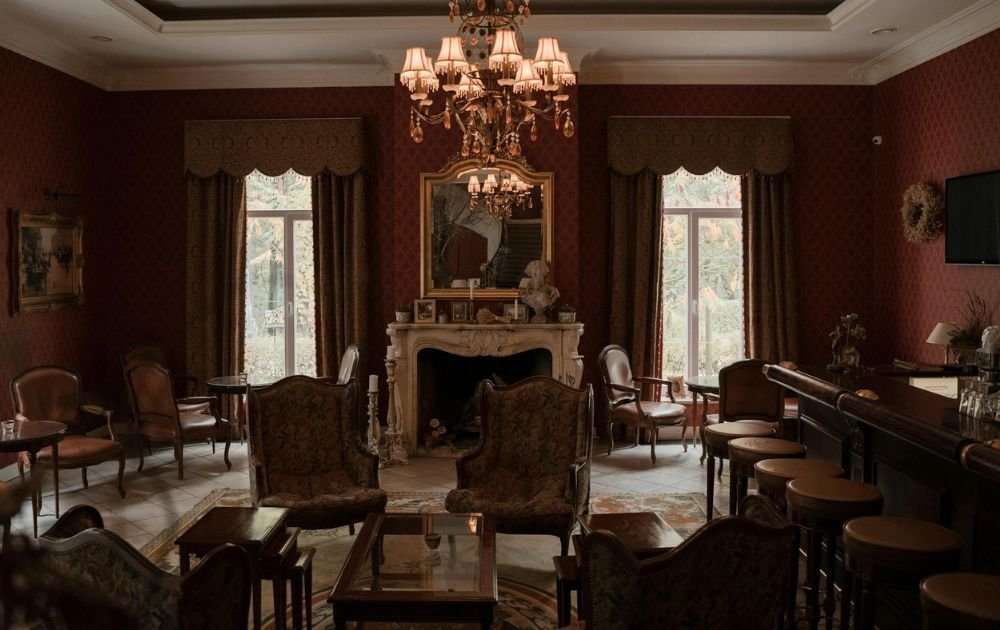
Sometimes, the problem with an awkward living room layout with fireplace is that we focus only on the fireplace and ignore the wall it’s part of. Consider decorating the entire wall with built-ins, textured panels, or vertical art to make the space feel intentional and whole.
Use decor to lead the eye across the space — from one end of the wall to the other — with framed prints, sconces, or layered lighting. It makes the room feel cohesive rather than chopped up.
When the fireplace blends into a well-designed wall, the whole layout feels more structured — even if the fireplace itself isn’t in a traditional spot.
🚫 What to Avoid in Awkward Layouts
- Avoid placing the TV too high above the fireplace
- Don’t block walkways with furniture
- Skip heavy, inflexible sofas in small rooms
- Don’t ignore corners — they can be used creatively
🤔 FAQs
Q: How do I arrange furniture in a living room with a fireplace and TV?
A: Use a layout that places the TV beside the fireplace or above it (if comfortable)—angle furniture to provide visibility to both.
Q: What’s the best layout for a small living room with a fireplace?
A: Float furniture around a rug, use slim sofas, and keep pathways clear. Lightweight furniture helps with flexibility.
Q: Should the fireplace always be the focal point?
A: Not always. If it’s rarely used or outdated, you can design the space around another feature like a media wall or window.
✅ Final Thoughts
An awkward living room layout with fireplace might feel overwhelming at first, but with these seven layout ideas, you can create a space that’s both functional and beautiful. The key is to work with your space rather than against it — whether that means floating furniture, dividing the room into zones, or simply reframing what the focal point should be.
Test different arrangements, use what you already have, and focus on comfort and Flow. A cozy, balanced living room is possible — even with a tricky fireplace in the mix.
For more ideas on balancing function and style, Better Homes & Gardens shares smart fireplace design tips.




Hello, friend!
thedecortrends.com, I appreciate the care you put into this space—it really shows.
I recently published my ebooks and training videos on
https://www.hotelreceptionisttraining.com/
They feel like a rare find for anyone interested in hospitality management and tourism. These ebooks and videos have already been welcomed and found very useful by students in Russia, the USA, France, the UK, Australia, Spain, and Vietnam—helping learners and professionals strengthen their real hotel reception skills. I believe visitors and readers here might also find them practical and inspiring.
Unlike many resources that stay only on theory, this ebook and training video set is closely connected to today’s hotel business. It comes with full step-by-step training videos that guide learners through real front desk guest service situations—showing exactly how to welcome, assist, and serve hotel guests in a professional way. That’s what makes these materials special: they combine academic knowledge with real practice.
With respect to the owners of thedecortrends.com who keep this platform alive, I kindly ask to share this small contribution. For readers and visitors, these skills and interview tips can truly help anyone interested in becoming a hotel receptionist prepare with confidence and secure a good job at hotels and resorts worldwide. If found suitable, I’d be grateful for it to remain here so it can reach those who need it.
Why These Ebooks and Training Videos Are Special
They uniquely combine academic pathways such as a bachelor’s degree in hospitality management or a master’s degree in hospitality management with very practical guidance on the front desk agent description. They also cover the hotel front desk receptionist job description, and detailed hotel front desk duties and responsibilities.
The materials go further by explaining the hotel reservation process, hotel check-in, check-out flow, guest service handling, and practical guest service recovery—covering nearly every situation that arises in the daily business of a front office operation.
Beyond theory, my ebooks and training videos connect the academic side of hospitality management studies with the real-life practice of hotel front desk duties and responsibilities.
– For students and readers: they bridge classroom study with career preparation, showing how hotel and management course theory link directly to front desk skills.
– For professionals and community visitors: they support career growth through questions for reception interview, with step-by-step questions to ask a receptionist in an interview. There’s also guidance on writing a strong receptionist job description for resume.
As someone who has taught resort management for nearly 30 years, I rarely see materials that balance the academic foundation with the day-to-day job description of front desk receptionist in hotel so effectively. This training not only teaches but also simulates real hotel reception challenges—making it as close to on-the-job learning as possible, while still providing structured guidance.
I hope the owners of thedecortrends.com, and the readers/visitors of thedecortrends.com, will support my ebooks and training videos so more people can access the information and gain the essential skills needed to become a professional hotel receptionist in any hotel or resort worldwide.
Either way, thank you, thedecortrends.com, for maintaining such a respectful space online.